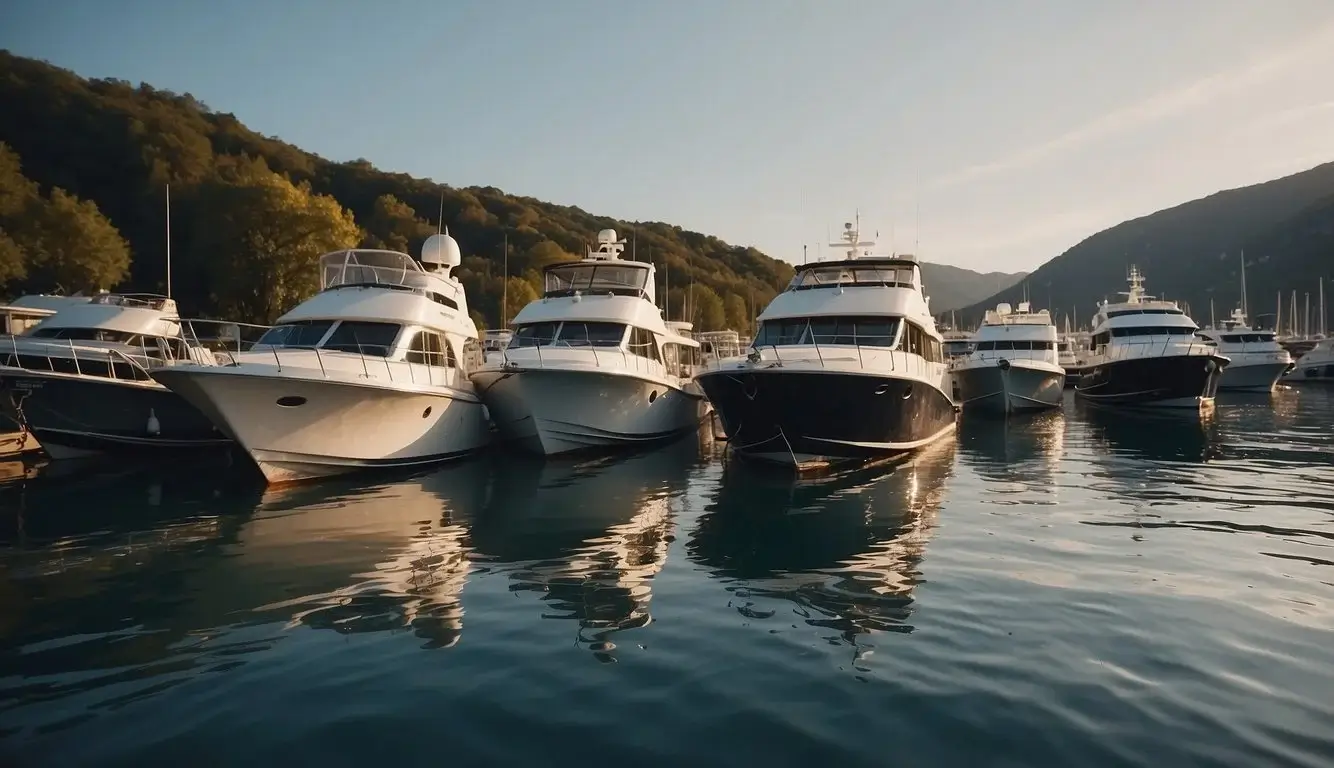After numerous discussions with seasoned sailors and acquiring knowledge from their experience, I’m thrilled to share the basic principles of boating etiquette, essential for fostering a safe and enjoyable environment on the water. The open sea is a shared space, and as members of the boating community, it’s important for us to navigate it with consideration and respect for our fellow boaters.
This guide to boating etiquette is your compass to navigating the unwritten rules that ensure harmony and safety among boaters. From carefully managing your vessel’s wake to extending a hand to those in need, these practices underscore the importance of mutual respect. Mastering the art of courteous launching, docking, and anchoring and a commitment to preserving our waterways make for a better boating experience for all. Embracing these principles is crucial in maintaining the water as a safe and welcoming place for everyone who sets sail.
Key Takeaways
- Observing boating etiquette is essential for safety and community on waterways.
- Knowledge and application of boating rules and communications ensure smooth sailing.
- Environmental care and respect for others are crucial for a positive boating experience.
Basic Boating Rules
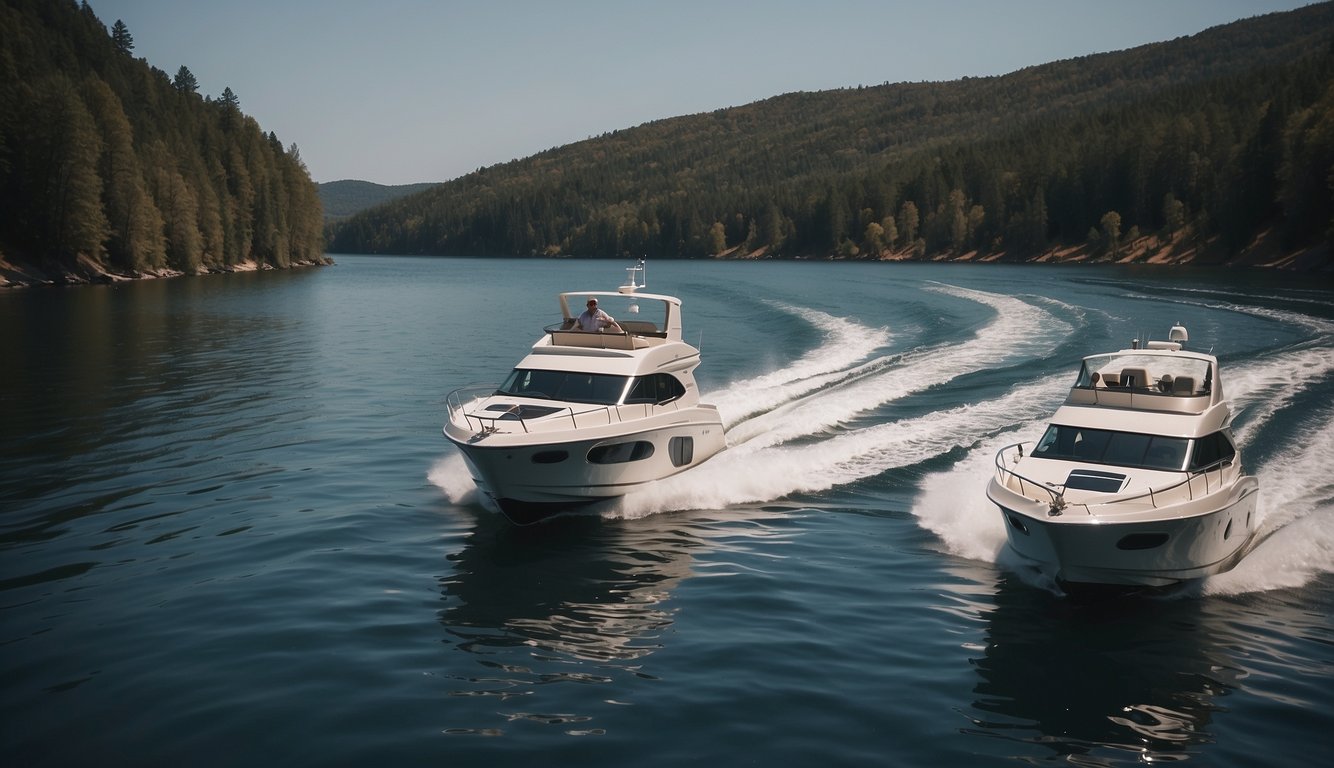
When I’m out on the water, I always adhere to the established boating rules. These guidelines keep everyone safe and help avoid confusion. There are key rules regarding the right of way and how to navigate busy channels that are crucial for every boater.
Understanding Right of Way
I’ve learned that in boating, the concept of right of way is essential to prevent collisions. Here’s what I follow:
- Sailboats under sail usually have the right of way over powerboats, a rule that makes my time at the helm easier.
- When two sailboats cross paths, the one with the wind on the starboard (right) side has the right of way. This simple yet vital rule should be remembered.
Navigating Channels and Waterways
When I’m navigating through channels, it’s essential to keep a few rules in mind:
- Stay to the starboard side of the channel, just like following traffic lanes on the road.
- In narrow channels, I give way to vessels that can only navigate within those channels, ensuring smoother passage for everyone.
Keeping these basic rules in mind makes my boating experiences safer and more enjoyable for everyone involved.
Safety Onboard
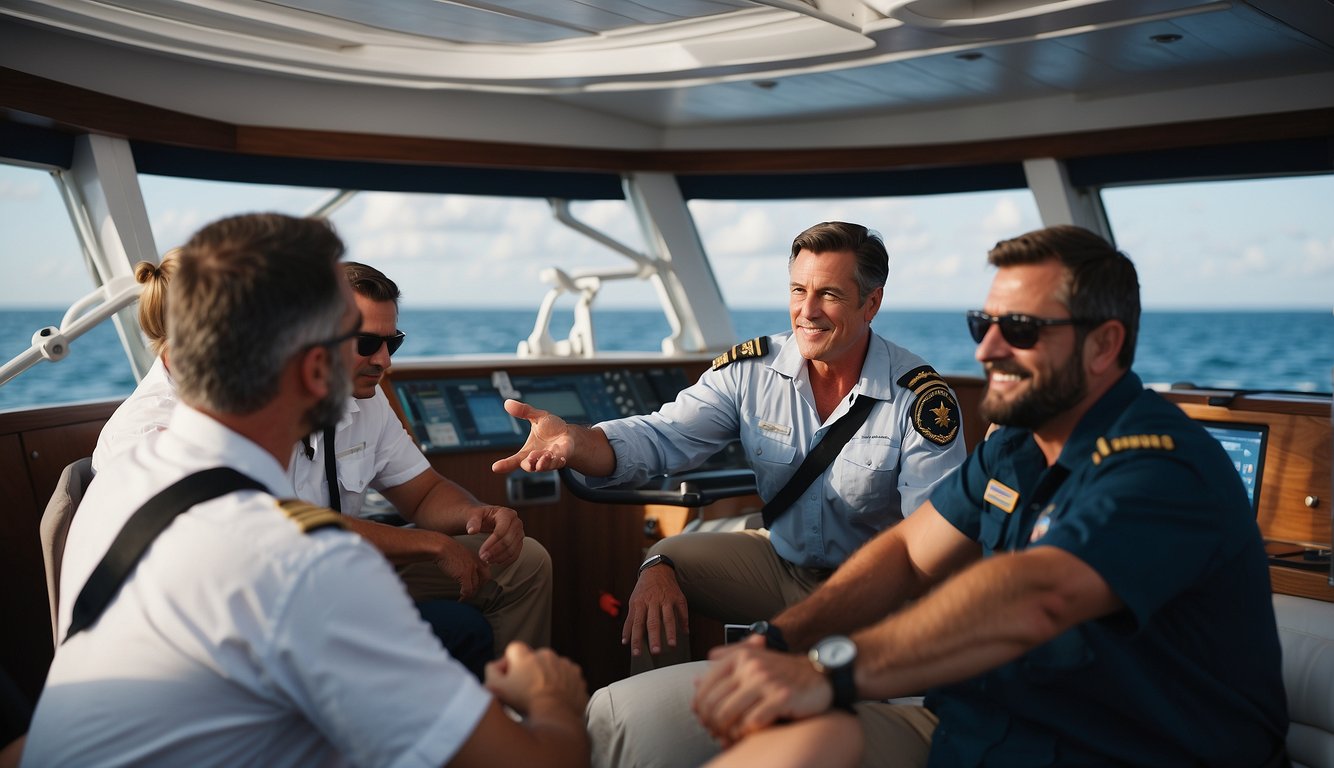
Ensuring safety onboard is my top priority when setting sail. It’s essential to have proper life jackets and emergency equipment and to know how to handle emergencies effectively.
Life Jackets and Equipment
Before depart, I check that I have enough life jackets for everyone on board and that they’re easily accessible. It’s not just about having them, though—it’s key to ensure they fit properly and are U.S. Coast Guard-approved. Here’s a quick checklist for my life jacket inventory:
- Personal flotation devices (PFDs): One per person, plus extras.
- Visual distress signals: Flares and daytime signals.
- Sound-producing devices: Whistles or horns as a means of communication.
- Fire extinguishers: Adequately charged and in an accessible location.
Handling Emergencies
If an emergency arises, calm and quick thinking is crucial. I always keep my boat’s emergency procedures in an easily accessible place and review them regularly. Here’s how I prepare:
- Distress communications:
- Have a VHF radio on board and know how to operate it.
- Understand how to send a distress signal should I ever need to contact the Coast Guard.
- First-Aid knowledge:
- Keep a well-stocked first-aid kit.
- I’m familiar with basic first-aid techniques to handle minor injuries or ailments until professional help is available.
By focusing on these safety measures and being prepared for emergencies, I help ensure a safer boating experience for myself and my passengers.
Docking and Anchoring
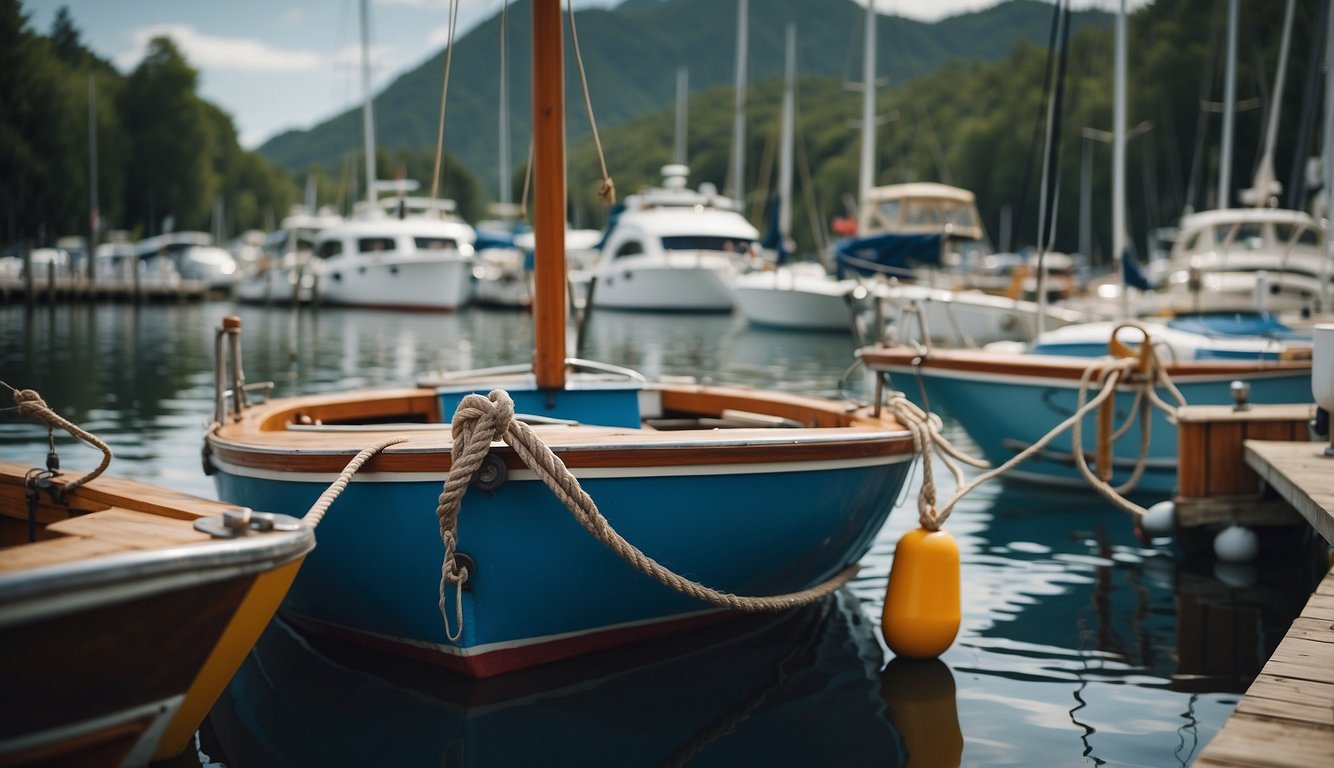
When I pull into a harbor, I focus on properly securing my vessel and refueling without inconveniencing others. These are not just courtesies; they are essential practices for safe and harmonious boating.
Securing Your Vessel
When I approach the dock, I always have my fenders and dock lines ready to prevent scraping or bumping. Once moored, I double-check that my lines are securely fastened to the dock cleats, ensuring that they’re neither too tight nor too slack. I maintain a tidy area on the dock to avoid tripping hazards or obstructing the path for other boaters.
Fueling Etiquette
At the fuel dock, timing is everything. I aim to approach when there’s less traffic, and I make sure to have my payment method ready ahead of time to avoid delays. After fueling, I promptly move my boat to allow access for others. It’s important to me to prevent any fuel spills, and I always use an absorbent pad near the fuel inlet to catch any drips.
Communication on Water
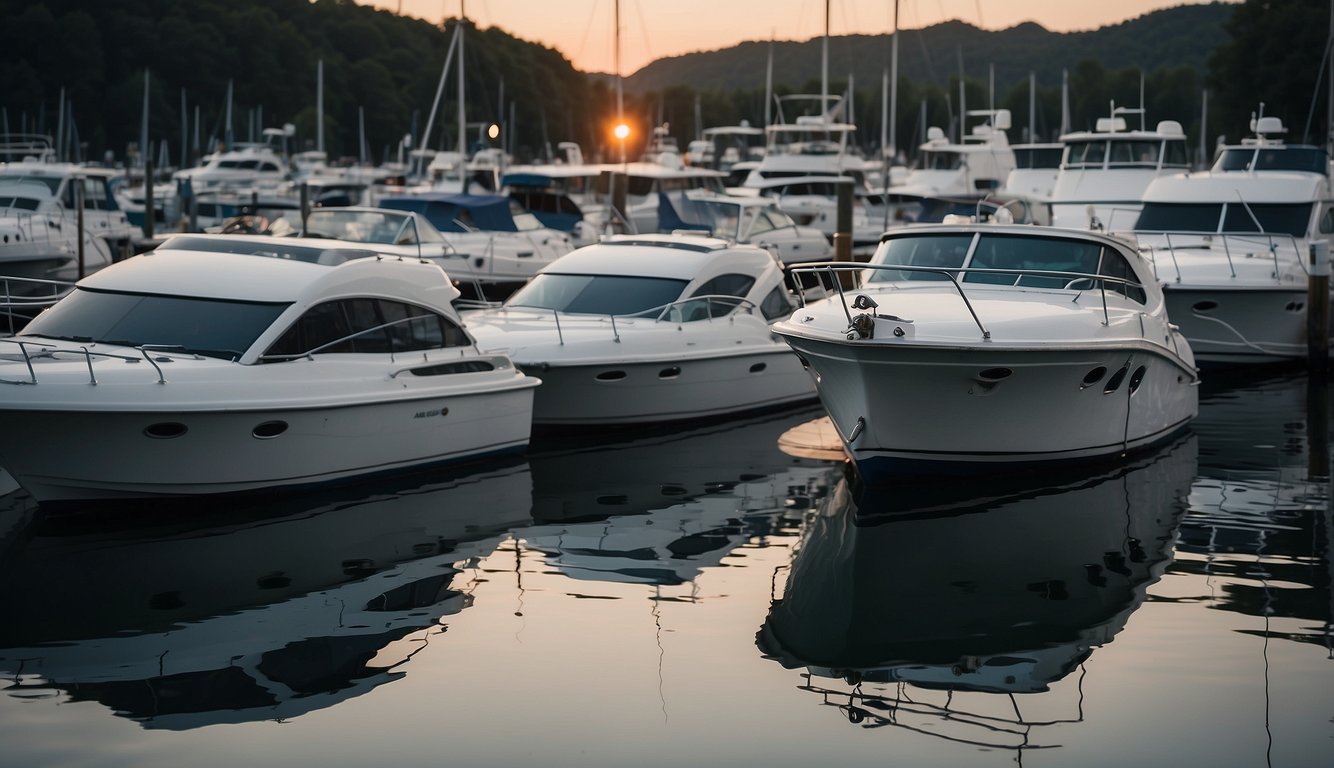
Clear communication on the water is crucial for safely navigating and avoiding misunderstandings between vessels. My focus here is on two primary tools: VHF radios and sound signaling systems, both of which are indispensable for effective communication.
VHF Radio Protocol
I always make sure my VHF radio is in good working order before setting sail. It’s essential for communicating with other boats, marinas, and coast guards, especially if I need assistance. I keep to the proper channels—Channel 16 for hailing and distress, and other working channels for day-to-day communication. I’m brief and clear when I speak, pressing the transmit button firmly and waiting for a couple of seconds before starting to talk to ensure the first part of my message isn’t cut off.
Signaling and Sound Systems
Regarding sound signaling, I pay attention to what signals other boats are making and use my vessel’s sound system to communicate effectively. For example, one prolonged blast every two minutes indicates my presence in fog. Short blasts can signal my intentions of movement, like altering my course. Understanding and using these sound signals correctly is crucial so that other vessels know what I intend to do, ensuring that everyone stays safe on the water.
Environmental Awareness
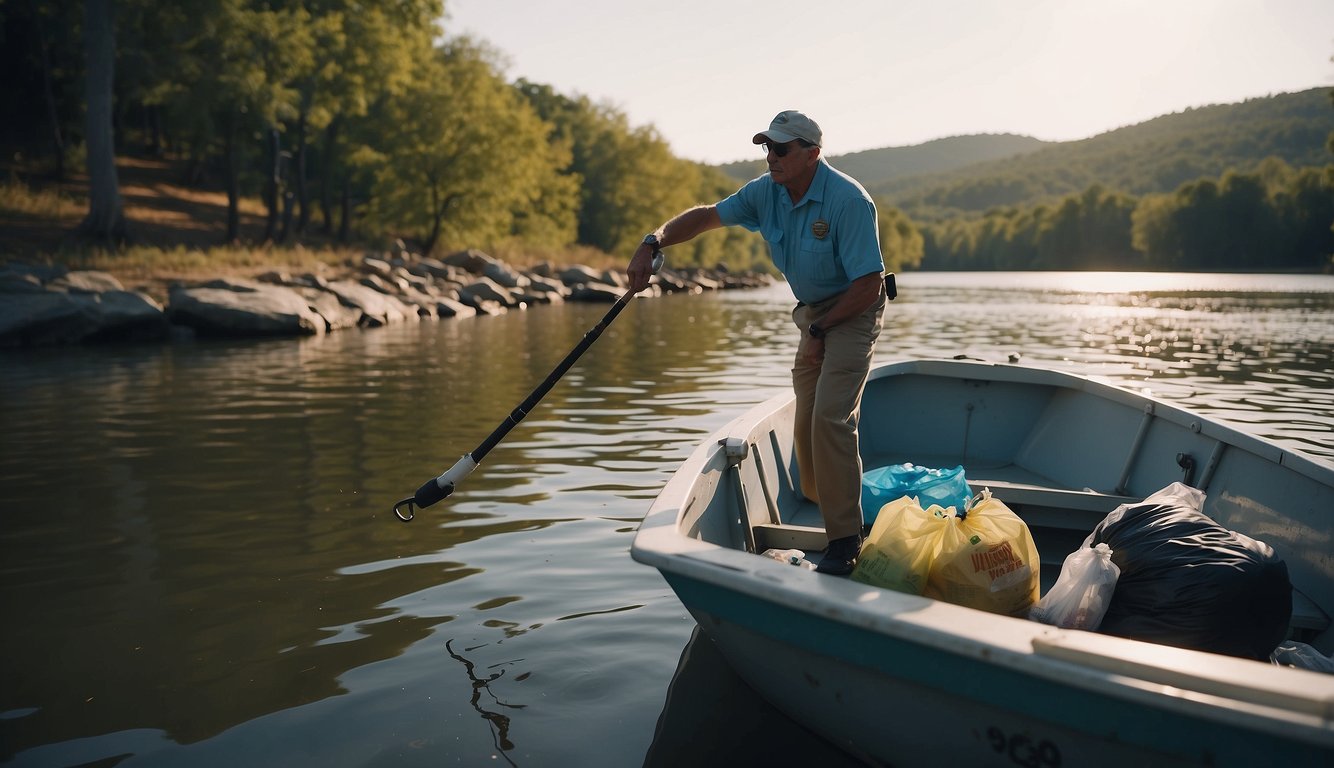
When I’m out on the water, I recognize that maintaining the health and beauty of the environment is crucial to sustainable boating. Here’s how I contribute to environmental preservation as a responsible boater.
Avoiding Damage to Nature
Ensuring I don’t harm the natural habitats I visit is my priority. I stay within marked channels to protect aquatic plants and avoid disturbing wildlife. I’m mindful when anchoring, making sure I do so in sandy or muddy areas to avoid damaging sensitive ecosystems.
Dealing with Trash and Waste
Trash Management: I always stash trash bags on my boat to secure any waste I produce, ensuring nothing gets tossed overboard. When it comes to disposal, I follow the protocol of disposing of trash properly at designated facilities onshore.
Waste Treatment: My boat is equipped with a marine sanitation device to treat sewage. I pump out at designated facilities to prevent pollution, complying with regulations to protect the marine environment.
Consideration for Others
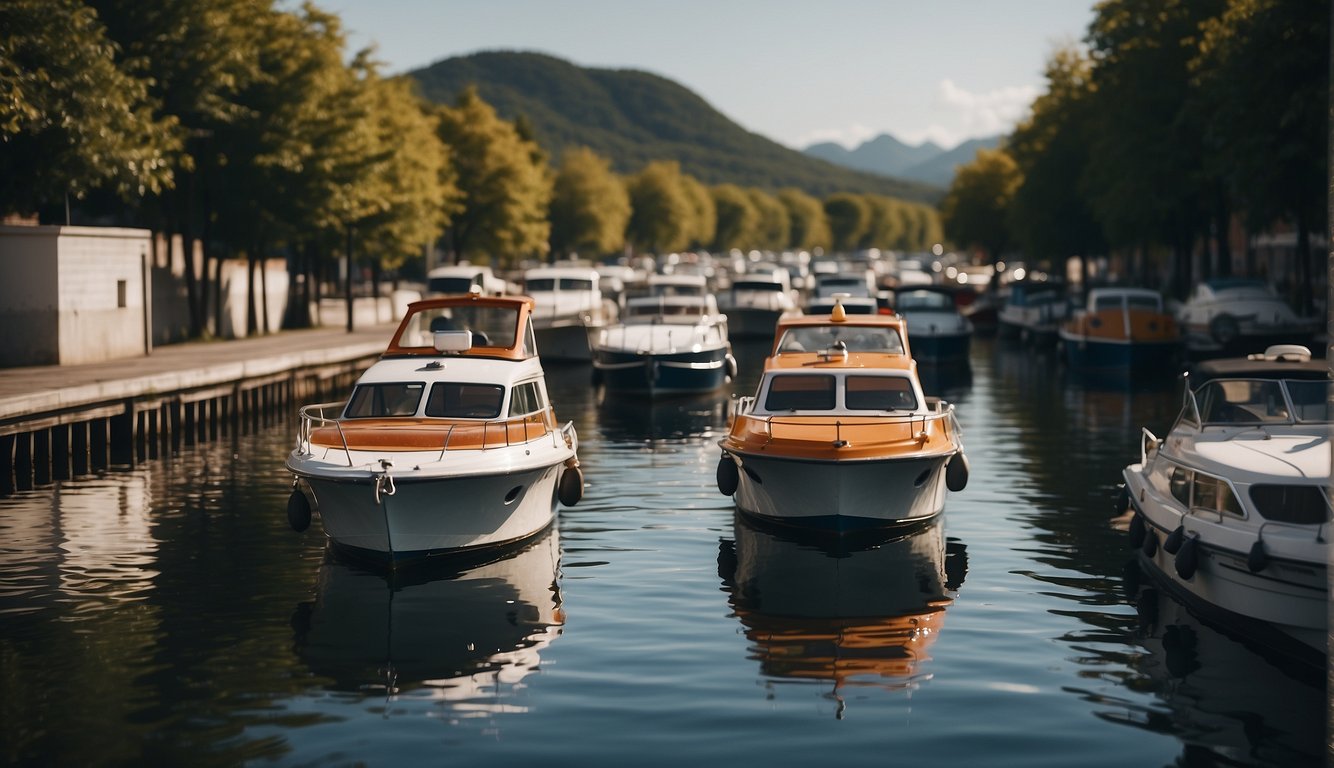
I believe respecting fellow boaters, swimmers, and marine wildlife is key to a harmonious experience on the water. A crucial part of this is managing my speed and the boat’s wake, as well as being mindful about noise and music levels.
Speed and Wake Management
When I’m captaining my boat, one of my primary responsibilities is managing both speed and wake. It’s essential to:
- Slow down in crowded areas to minimize my wake, which ensures the safety of swimmers and other smaller vessels.
- Adjust my speed according to the well-posted signs, especially in marinas or near the coast, to prevent erosion and damage to other boats.
Noise and Music Control
As for noise, I always aim to:
- Keep music at a level that won’t disturb wildlife or other boaters. This means using my indoor speakers or keeping the volume down when I’m close to others.
- Avoid excessive noise, especially early in the morning or late at night. Sound carries far over water, and peace is often the reason people go to the water.
Boat Launching and Retrieval
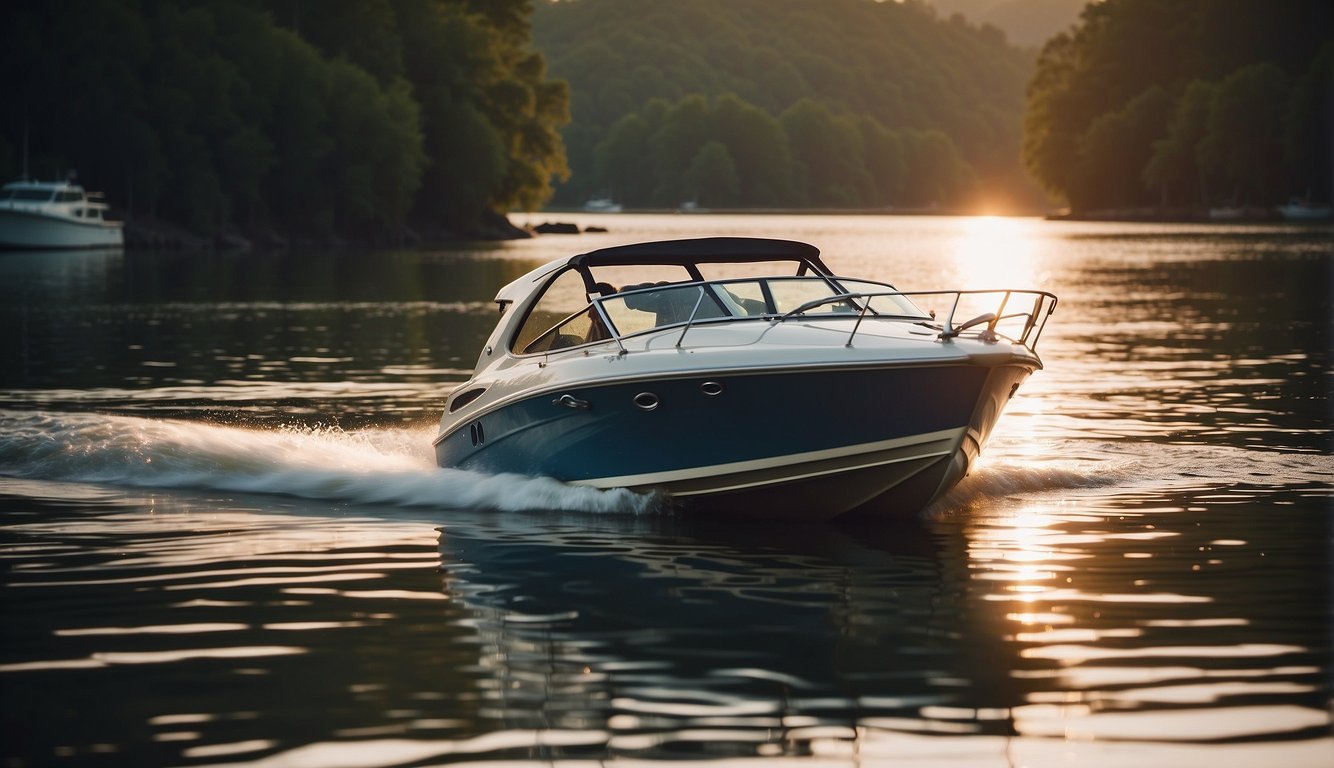
When I head to the water, I always ensure that my actions at the boat ramp don’t disrupt others. Following a set of unwritten rules is crucial for a smooth launch and retrieval process.
Ramp Etiquette
The first thing I do at a boat ramp is inspect the conditions. This involves checking the water depth, the side the dock is positioned, and the flow of boater traffic. It’s important to prep my boat before it’s my turn to use the ramp, a process which includes inserting the drain plug, disconnecting the trailer’s brake lights, and removing motor travel supports if present.
- Speed: Maintaining a slow and controlled speed is vital. You don’t want to create waves that could disrupt other boaters or make controlling your vessel difficult.
- Lining Up: I make sure to line up in the proper queue and wait for my turn, showing courtesy to fellow boaters.
- Efficiency: I aim to launch quickly and efficiently to prevent a backlog. This means having everything ready before it’s my turn.
- Awareness: Staying vigilant is key so that I can move my boat out of the way once it’s in the water, making room for the next person.
It’s helpful to review guidelines like those on Discover Boating to ensure I’m up to date with the expected practices.
Parking and Leaving
After launching my boat, I immediately move my vehicle and trailer to the parking area. This helps keep the ramp clear for other users.
- Parking: I park in designated spots to avoid fines and ensure there is enough space for others to maneuver their trailers.
- Timeliness: Once I wrap up my boating adventure, I retrieve my vehicle promptly to expedite my boat’s retrieval and to minimize time on the ramp.
- Consideration for Others: If the boat ramp is busy when I return, I tie up at a courtesy dock or keep my boat out of the launch area until my trailer is ready.
By sticking to these practices, I contribute to a pleasant experience at the dock for myself and others.
Marina Manners

When I visit a marina, I know that respecting both the staff and other guests ensures a pleasant atmosphere for everyone. I adhere to a few key practices that make a big difference in maintaining harmony on the docks.
Interacting with Marina Staff
I make it a point to know the marina regulations; this shows respect for the rules the staff enforces. When I approach the staff, I greet them with a smile and speak clearly about my needs or concerns. If I need assistance with my vessel or have questions about the facilities, I patiently wait my turn and express my gratitude afterwards, because recognizing their efforts goes a long way.
Courtesy to Marina Guests
When it comes to my fellow marina guests, I act considerately. Here’s how:
- Say hello & help others: Friendly greetings and a helping hand to other guests fosters a camaraderie on the docks.
- Slow down: I am mindful to reduce my boat’s speed when approaching the dock to avoid creating a wake that could disturb other vessels.
- Keep it clean: I maintain the cleanliness of my area, ensuring that trash always ends up in bins and that common spaces are left tidy.
- Respect quiet hours: Noise travels over water, so I keep my music and conversations at a low volume, especially during the evening and early morning hours.
By engaging with marina staff cordially and treating other guests with consideration, I contribute to a welcoming and friendly environment at the marina.
Handling Your Vessel

When I’m out on the water, I always focus on maneuvering my vessel safely and understanding how to interact with other boats. Here are some crisp tips and solid rules I stick to when overtaking or being overtaken to prevent collisions and ensure a smooth sailing experience.
Maneuvering Tips
- Be Aware of Your Surroundings: When maneuvering my sailboat or powerboat, my eyes constantly scan the water. It’s like driving a car; checking for other boats, buoys, and changes in the water’s behavior helps me avoid any potential problems.
- Use Your Engine Wisely: Whenever I engage the engine, I ensure it’s done smoothly and with purpose. A sharp acceleration or abrupt stop can be startling, not just for me but for others nearby.
Rules for Overtaking and Being Overtaken
- Overtaking Rules: In a head-on situation, I abide by the “port-to-port” rule, which means I pass the oncoming boat on its port (left) side as I keep my port side to them. When I’m overtaking another vessel from behind, it’s my responsibility to maneuver around them safely, typically passing on their starboard (right) side, signaling my intentions clearly.
- Being Overtaken: If I find that I’m the one being overtaken, I hold my course and speed, making it easier for the other vessel to assess the situation and pass safely. It’s like letting someone overtake you on the highway; predictability is key.
Responsibilities of the Captain
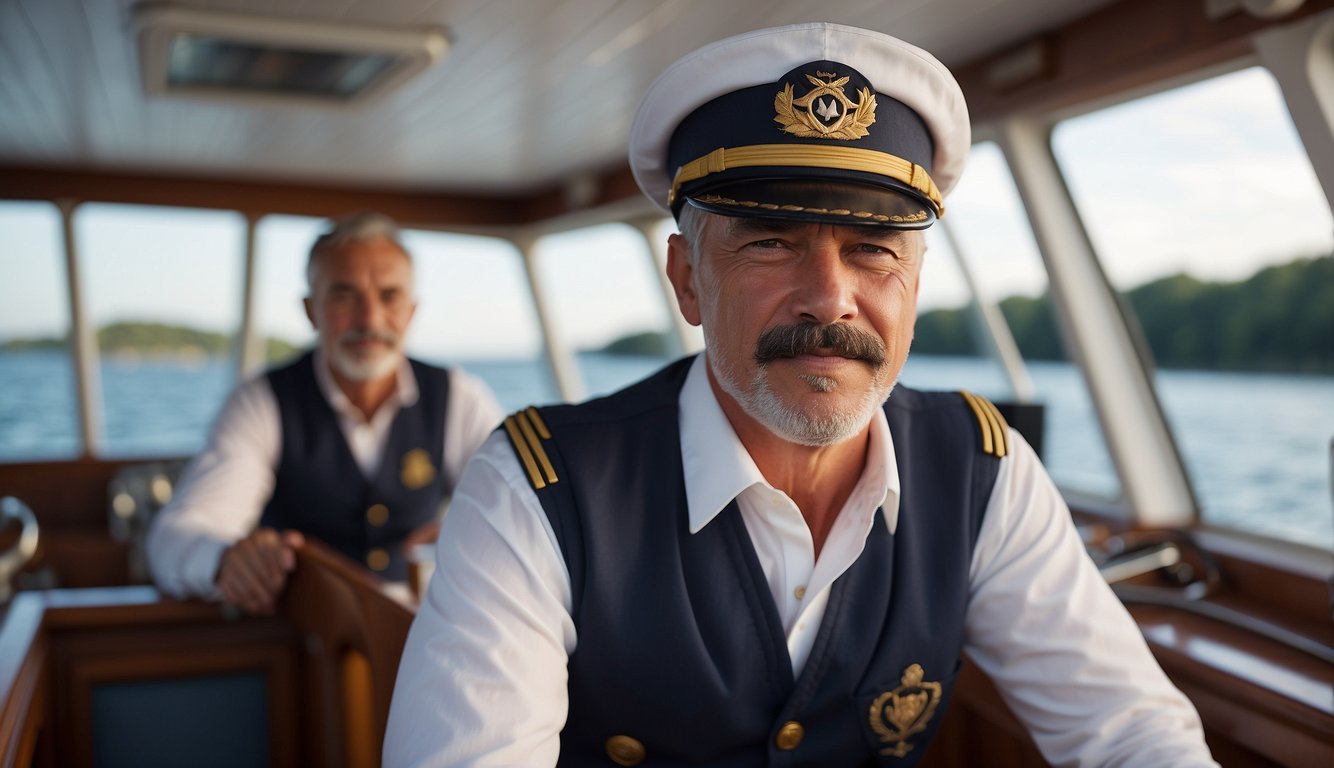
As a boat captain, my primary role is to ensure everything runs safely and smoothly. It’s a big responsibility, but following clear guidelines helps me maintain control and assure the security of all passengers on board.
Maintaining Authority Onboard
My main goal: Keep authority over every aspect of the boat’s operation. Here’s how I manage this complex task:
- Set clear rules: Before we set sail, I outline the do’s and don’ts for everyone on board.
- Delegate duties: To proficient crew members, assigning specific roles helps maintain order.
- Communication: I keep open lines of dialogue with my crew and passengers, making sure instructions are understood and followed.
Maintaining authority requires firmness, but being approachable ensures everyone respects and listens to me, making our time at sea enjoyable and secure.
Ensuring Passenger Safety
Passenger safety is non-negotiable and is my highest priority. Here’s my checklist to ensure everyone stays safe:
- Safety briefing: I conduct a comprehensive safety briefing that includes emergency procedures and location of lifejackets.
- Regular drills: We practice safety drills regularly to prepare for any emergencies.
- Weather checks: I continuously monitor weather conditions to avoid any foreseeable dangers.
- Equipment maintenance: Regular checks and maintenance of safety equipment are imperative to ensure they function correctly when needed.
Remember, as captain, it’s my responsibility to always be prepared and responsive to any issues, ensuring a safe and pleasant experience for all my passengers.
Additional Considerations
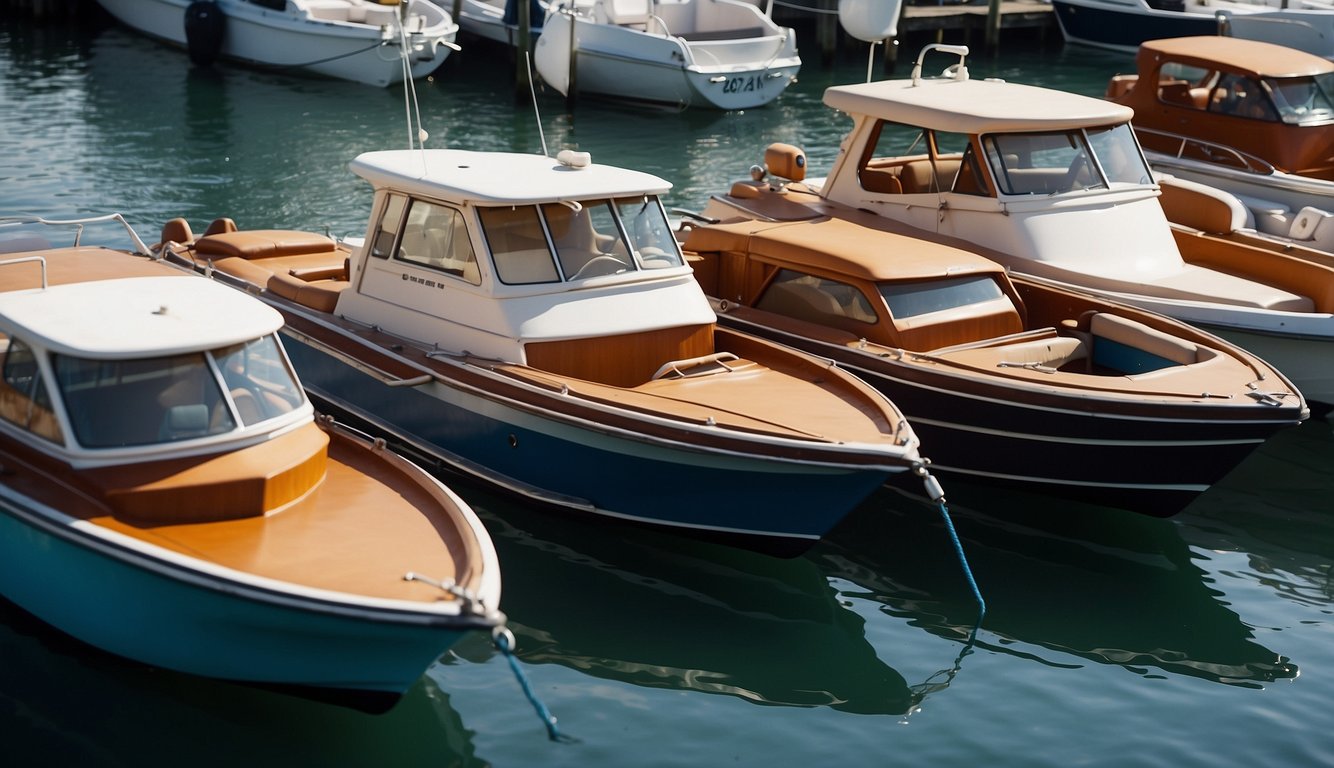
When enjoying the water, it’s crucial for me to consider others, including swimmers and divers, and to be well-versed in local regulations. This ensures everyone’s safety and enjoyment.
Dealing with Swimmers and Divers
I always take extra care when I’m maneuvering my boat near areas popular with swimmers and divers. Swimmers can frequently be found in designated swimming areas or near beaches, and it’s crucial to maintain a generous distance from them. For divers, I look out for dive flags (a red flag with a white diagonal stripe) that signal their presence. When I spot one, I know to keep a safe distance of at least 100 feet from the flag in open water and 300 feet in narrow channels.
Understanding Local Regulations
To ensure I adhere to local laws, I always educate myself on the regulations of the area where I’m boating. This includes understanding anchorage zones and observing speed limits in different channels. I always check if a license is required to navigate certain waterways, as this can vary by location. Being aware of these regulations keeps me compliant and respectful of both law enforcement and fellow boaters.
FAQ – Boating Etiquette
What is the proper way to launch and retrieve a boat at a public ramp?
- Preparation: Prepare your boat for launching or retrieval away from the ramp to avoid blocking others. This includes loading gear, attaching lines, and ensuring the engine starts properly.
- Efficiency: Work quickly and efficiently to launch or retrieve your boat to minimize wait times for others. Offer help to others if you’re able, especially if they’re struggling or new to boating.
- Parking: After launching, move your vehicle and trailer to the designated parking area promptly to keep the ramp area clear.
How should I navigate around other boats?
- Right of Way: Understand and follow the navigational rules, such as giving way to vessels on your starboard (right) side and overtaking vessels only when it’s safe to do so.
- Speed: Maintain a safe speed, especially in crowded or narrow areas, and slow down when passing other boats to minimize wake.
- Awareness: Always be aware of your surroundings, including other boats, swimmers, and fixed obstacles.
Is it okay to play music on my boat?
While enjoying music on your boat is part of the fun, keep the volume at a reasonable level, especially near other boats, marinas, or residential areas. Be mindful that sound travels more easily over water and what might seem like a moderate volume on your boat could be disruptive to others.
If you enjoyed reading about Boating Etiquette, check out our other articles:
- Bowling Etiquette 2024: Tips for Polite Play on the Lanes
- Surf Etiquette 2024: Key Rules for Sharing the Waves
- Tennis Etiquette 2024: Key Rules and Polite Play for Beginners
- Laundromat Etiquette 2024: Tips for a Harmonious Wash Day
- Theatre Etiquette 2024: Tips for a Respectful Audience Experience
Feel free to also check out our other Articles from the category “Etiquette & Manners“ and don’t forget to follow us on Pinterest.

